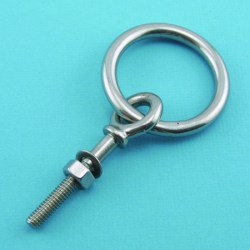- Thread starter
- #11
enggass
Chillin' with the herd
Thanks - but still, how do you attach to the top and bottom - anyway you could post a pic?I just looped it around the 2x4 and hooked it back on itself. I am the official fence installer around my place and what I would give for some nice level clear land to fence.


 ) You see how the guy is pre-drilling the post and brace pole, pounding the brace pin in one then matching up the pin to the hole in the post?? PITA! Easier if there are multiple people but that wasn't my case. I did it their way ONCE. Then I made my discovery - ratchet straps!!! Yes, they are almost as useful as duct tape and baling wire.
) You see how the guy is pre-drilling the post and brace pole, pounding the brace pin in one then matching up the pin to the hole in the post?? PITA! Easier if there are multiple people but that wasn't my case. I did it their way ONCE. Then I made my discovery - ratchet straps!!! Yes, they are almost as useful as duct tape and baling wire.

 Actually it is worse than crap,
Actually it is worse than crap,  but this is a family forum so I won't use those descriptive terms here. Your goats could probably walk through the holes. You get what you pay for. Did I mention that field fence is crap?
but this is a family forum so I won't use those descriptive terms here. Your goats could probably walk through the holes. You get what you pay for. Did I mention that field fence is crap?